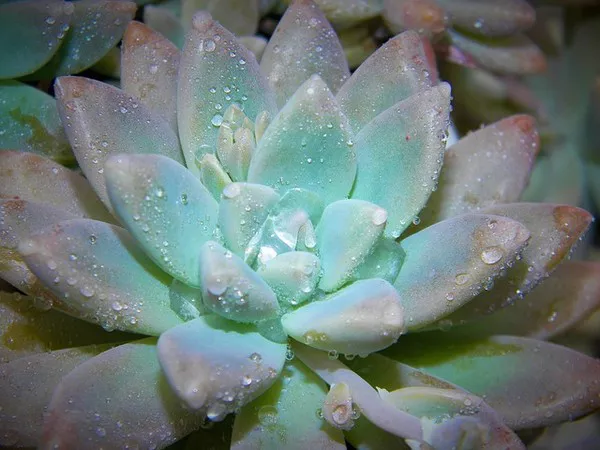Succulents are popular plants known for their beauty, resilience, and low maintenance requirements. While many gardeners propagate succulents through cuttings or division, growing them from seeds can be a rewarding and exciting experience. This article provides a step-by-step guide on how to plant succulent seeds for optimal germination and growth. From choosing the right seeds to nurturing the young seedlings, we cover essential tips and techniques to ensure successful succulent propagation from seeds.
Succulents have captured the hearts of gardening enthusiasts worldwide with their unique shapes, vibrant colors, and ability to thrive in arid conditions. Propagating succulents from seeds adds an element of novelty and allows for a wider selection of plant varieties. While it requires patience and attention, planting succulent seeds can be a fulfilling journey for both seasoned gardeners and beginners alike.
Selecting the Right Seeds:
When choosing succulent seeds, consider the following factors:
1. Species and Varieties:
Select seeds of succulent species and varieties that align with your preferences and growing conditions. Research the specific care requirements and growth habits of the succulents you wish to cultivate to ensure success.
2. Freshness:
Opt for fresh seeds to increase the likelihood of successful germination. Seeds that are too old or have been improperly stored may have reduced viability.
3. Reputable Sellers:
Purchase seeds from reputable sellers or specialized nurseries to ensure quality and authenticity. Reputable sources are more likely to provide accurate information about the seeds and their cultivation.
Preparing the Planting Medium:
Succulent seeds require a well-draining and nutrient-rich planting medium for optimal growth. Follow these steps to prepare the ideal planting mix:
1. Use a Well-Draining Soil Blend:
Create a soil mix using a combination of potting soil, perlite, and coarse sand in equal proportions. This blend ensures excellent drainage and prevents waterlogged conditions that can harm delicate succulent seedlings.
2. Sterilization:
Before sowing the seeds, sterilize the planting medium to minimize the risk of fungal or bacterial infections. Place the soil mix in an oven-safe container and bake it at a low temperature (around 180°F or 82°C) for approximately 30 minutes. Allow the soil to cool before use.
Sowing Succulent Seeds:
1. Choose the Right Container:
Select a shallow and well-draining container for sowing the succulent seeds. Small seedling trays or individual pots are suitable choices. Ensure the containers have drainage holes to prevent water accumulation.
2. Dampen the Soil Mix:
Moisten the planting medium lightly before sowing the seeds. Use a spray bottle to distribute water evenly without making the soil overly wet.
3. Scatter the Seeds:
Carefully scatter the succulent seeds on the soil surface, ensuring they are spaced evenly. Avoid overcrowding, as this can lead to competition for resources among seedlings.
4. Lightly Cover the Seeds:
Cover the seeds with a thin layer of the soil mix. Succulent seeds generally require light to germinate, so it’s essential not to bury them too deeply.
Providing Optimal Growing Conditions:
Succulent seeds thrive under specific environmental conditions, which are crucial for successful germination:
1. Warmth:
Succulent seeds require consistent warmth to germinate effectively. Place the seed trays or pots in a warm location, such as near a south-facing window or on a propagation mat set to a temperature between 70°F to 75°F (21°C to 24°C).
2. Indirect Light:
Avoid exposing succulent seeds to direct sunlight, as it can lead to overheating and damage the tender seedlings. Indirect bright light is ideal for germination.
3. Proper Ventilation:
Good air circulation prevents excess moisture buildup and reduces the risk of mold or damping-off disease. Place a small fan nearby to provide gentle air movement around the seedlings.
Watering the Seedlings:
Maintaining proper moisture levels is crucial during the germination and early growth stages:
1. Bottom Watering:
Water the seedlings from the bottom by placing the container in a shallow tray of water. Allow the soil to soak up the water through the drainage holes.
2. Avoid Overwatering:
Succulent seeds are prone to rot if they remain consistently wet. Water the seedlings only when the top layer of soil feels dry to the touch. Overwatering can lead to damping-off or root rot.
Transplanting and Continued Care:
As the seedlings grow and develop multiple sets of true leaves, it is time to transplant them into individual pots filled with well-draining soil mix. Follow these steps:
1. Gently Lift Seedlings:
Carefully lift the seedlings from the communal tray or pot, ensuring you do not damage the delicate roots.
2. Plant in Individual Pots:
Place the seedlings in individual pots and lightly firm the soil around the roots to provide stability.
3. Gradual Sun Exposure:
Introduce the newly transplanted seedlings to increasing amounts of sunlight gradually. This process, known as “hardening off,” helps them acclimate to outdoor conditions if you plan to grow them outside.
4. Continue Adequate Watering:
Monitor the moisture levels in the individual pots and water the seedlings as needed. As the plants mature, adjust the watering frequency according to their specific species’ requirements.
Conclusion:
Growing succulent plants from seeds is a fascinating journey that allows gardeners to witness the entire lifecycle of these resilient and captivating plants. By selecting the right seeds, providing optimal growing conditions, and nurturing the seedlings, you can experience the joy of successfully propagating succulents from their early stages to flourishing and mature plants. With patience, care, and attention to detail, you can create a thriving succulent garden filled with a diverse array of fascinating and beautiful species.


